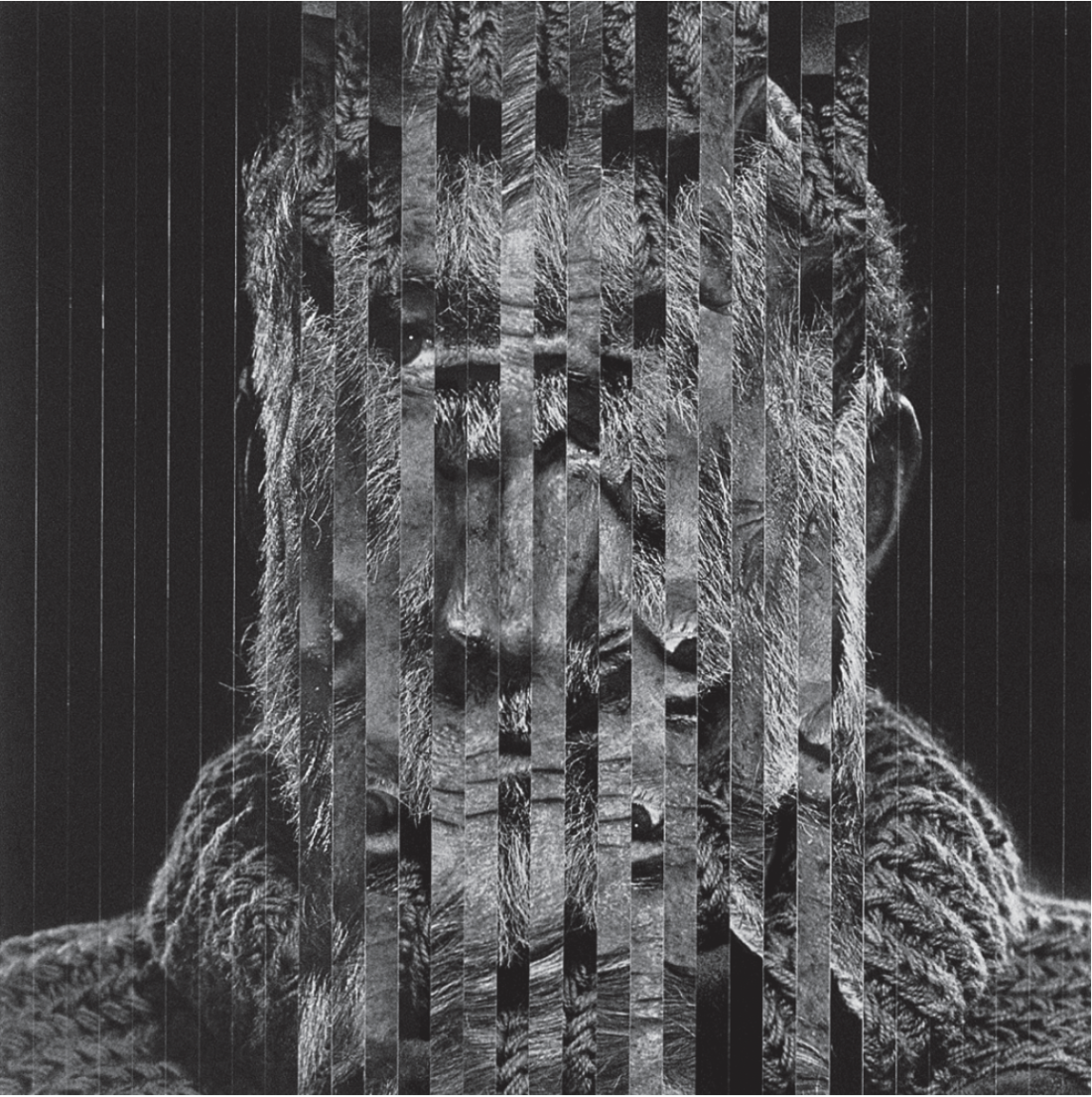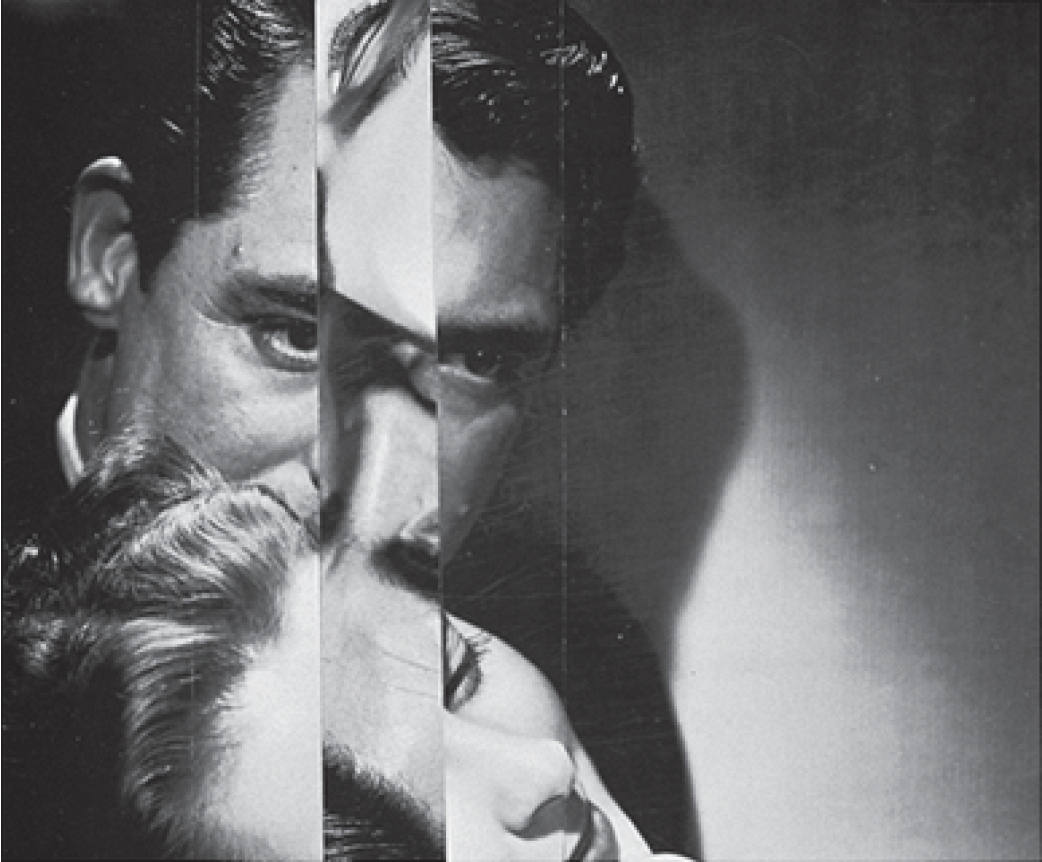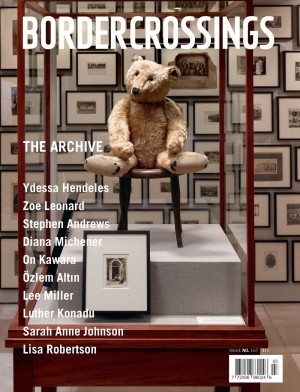Andrea Szilasi
Whoever is bitten by a werewolf and lives becomes a werewolf himself.
—Curt Siodmak, The Wolf Man, Universal/MCA, 1941
The wolf is loose in Andrea Szilasi’s powerfully evocative exhibition of new work at Galerie Joyce Yahouda in Montreal. This phenomenally restless and gifted artist touches on lycanthropic folklore, the anxious figuration of Francis Bacon and animal stories of the Middle Ages, all the better to gild the bower of her own funky 21st-century bestiary.
The Montreal setting is appropriate because here, in Quebec, the elusive wolf with the semblance of a human heart can only be one dread apparition: the loup-garou, the lone werewolf of French-Canadian folklore. The viewer of this exhibition is a voluntary apprentice as a would-be hunter with an experienced and very hairy guide, who is more beast than human; more loup-garou than unkempt coureur de bois.
What, or who, is this feral, hirsute creature howling under the full moon for succour in Szilasi’s exhibition at Yahouda? None other than literary legend Ernest Hemingway himself. In the work entitled Hairy head, 2005, barely human but still recognizably Ernest, the bearded author undergoes a sea change into something new, strange—and unsightly.
By witchcraft of her hand and wit and with a history of experimentation behind her, both pristine and exacting by any standards, Szilasi demonstrates once again in these new collages just how nimble her touch is and how deftly subversive her use of the extant photographic image to secure psychological meaning and truth while undermining photography’s own much-vaunted canons of objectivity. Her career-long preoccupation has been with subjecting the human body to a litany of transformations and, in this recent work, she retrofits photography itself with new, if unremarkable, tools—rulers, exacto knife, Scotch tape and glue—and expressive possibilities.
Her work is grounded in innovative ways, and means, of representing the body, whether using her own photographs, found images or the medium of collage. In her earlier collages, she eviscerated and reconstructed various photographs of body parts into new wholes entirely unforeseen. In subsequent works, she examined the countless tiered interiors of a single photograph, without the use of collage. In this new work, she returns to collage with a vengeance, and playfully invokes states of lycanthropy and vampirism in Baconesque fashion in her ongoing search for uncomfortable psychological meanings that can and do unsettle the viewer, displacing complacency and inducing a need for continuing reappraisal on our part.

Andrea Szilasi, Hairy head (large), 2005, collage (digital print on photo paper, tape), 102 x 102”. Photographs: Gabor Szilasi. Courtesy Galerie Joyce Yahouda, Montreal.
The exhibited “Portraits,” 2005, are a series of collages made by scissoring up and reconstituting portraits found in books on portrait photography and Hollywood studio portraits, magazines like National Geographic and whatever else struck her as appropriate grist for the mill.
The artist says: “They attempt to show what is inside the head, as opposed to what the outside of the head looks like. In other words, I reconfigured various photographs of heads to create portraits of emotions rather than of individuals. I have often thought that if a portrait could reveal how we feel inside, it may not necessarily depict a head with such a simple and symmetrical layout of two eyes, two ears, one nose and a mouth. The portrait would surely, on occasion, be a disorganized, fragmented and layered mess, a stew of somber and bright features that reflect clear, orderly thought as well as a confused stream of consciousness.”
The Hemingway image was taken from a Karsh book of portraits. She scanned the image and made a large print of it, then methodically spliced it with an exacto knife and ruler into long strips. She then took every second strip and turned it upside down and shifted each strip upwards or downwards, calibrating the composition as though adjusting lights and darks in a painting until she felt intuitively right about it. The result—the baroquely turtlenecked Ernest Hemingway having a very bad hair day, indeed. The manner of his transmogrification reminds us of painter Francis Bacon’s magnificently warped heads that express pure sensation. Szilasi is after something quite similar, I think, in the resonant menagerie at Joyce Yahouda.
She is not interested in the formal issues of collage per se so much as the psychological overtones with which she can invest collage. She wants something like emotional truth as opposed to wellcomposed, cosmetically pristine and empty appearances. If she comes up with the nightmarish opposite to those appearances in her perennially morphing subjects, well, that is an unspoken truth—a truism, really—of both the life-world we live in and her own latter-day portrait gallery cum bestiary.
A bestiary is a mediaeval book that contains concise accounts of sundry real or imaginary animals. Such compendiums reflected a strong and unswerving belief that the world itself was the embodiment of the Word of God, and that everything in the animal kingdom—along with some exotic critters undreamt-of by Noah— had a special, enduring significance. Effectively, each animal was a potent symbol. Andrea Szilasi’s photographic shape-shifting is rife with its own symbology of the subconscious that always, of course, points back at the unavoidably human. Indeed, her exhibition has lovely affinities with Jorge Luis Borges’s modernist bestiary, the delectable Book of Imaginary Beings, which like-mindedly collected all manner of imaginary beasts from literature and extant bestiaries into a literary triumph that is also a truly inspired work of zoomorphic bricolage. In her own bestiary representations, Szilasi instils tension and suggests epistemological confusion, and both a mood of ambiguity and a sense of the uncanny prevail in the collages.

Andrea Szilasi, Vampire, 2005, collage (photos from books, tape), 19 x 23 cm.
From the inception of her practice and her first solo exhibition in 1994 at Galerie Clark in Montreal, Szilasi has worked on and off in the medium of collage. She started by drawing on a source inventory that included anatomy books and old issues of Scientific American magazine. Her researches would take her much further afield. Her concern with varying representations of the human form is the connective tissue between all periods in her body of work.
Szilasi’s manner of working recalls the Surrealists’ cadaver exquis (Exquisite corpse) experiments. Their exercise of communal collage as a form of intersubjective thought lubricant was built upon serendipity, accident, incident and simply outrageous formal invention. Szilasi’s art of metaphoric displacement owes nothing to the Surrealists, however, and more to Shakespeare’s Tempest protagonist Caliban—I refer to his physical hybridity and the ambiguity as to whether he is human or animal— and to the aforementioned work of Francis Bacon.
Unlike Bacon, Szilasi strives to deconstruct without necessarily decomposing her figures or doing them any wilful violence, but she would probably agree with Bacon when he says: “I’m always hoping to deform people into appearance.” It is interesting to note that Bacon the painter and Szilasi the photographic artist both preferred to work from existing photographs as source material. Szilasi’s studio is pristine when compared to the glorious glutted cochonnerie of the dead painter’s with its scores of film stills, X-ray manuals and the locomotion experiments of Eadweard Muybridge. But Szilasi’s studio, in the home she shares with partner artist Michael Merrill in Montreal’s Cote St. Paul neighbourhood, with its wealth of photographica ripped from old and new books and magazines, discarded gelatin silver prints and old anatomicals, still reminds me of Bacon’s untidy lair.
Szilasi’s portrait gallery transforms the Yahouda space into a sort of Wellesian Island of Doctor Moreau for our unhappy times. Waylaid in this apparent paradise, as in the book, the viewer soon encounters monstrosities like those that embodied the endgame—better yet, the godgame—of the good doctor’s genetic experimentation. Szilasi is no Doctor Moreau, of course, and she is certainly no sadist in sheep’s clothing—but she is subversive, and her work always has a cutting edge, and, if you look closely enough, that edge is laguiole-sharp— and will draw blood.
This prospect of drawing blood is interesting, and not only in the context of the razor-sharp incisors and claws of lycanthropic lore and legend. Szilasi studied under the tutelage of figurative painter and unerring savant Marion Wagschal at Concordia University in Montreal. Marion has a reputation of goring her sitters into some semblance of their inner truth, and so, too, does Szilasi, in her own inimitable way, transforming the photographic portrait into an animal “other,” and one that seems at first so very far beyond our kin, but finally recognizable as being none other than our own blood kindred. ■
“Andrea Szilasi: Portraits” was on exhibit at Galerie Joyce Yahouda in Montreal from October 8 to November 5, 2005.
James D. Campbell is a writer and curator based in Montreal. Recent and upcoming publications include: Only Connect: The Radiant Cartography of David Urban (Michael Gibson); Shadowing the Self: Reflections on the Art of Eve K. Tremblay (CEAAC, Strasbourg, France, and Plein-Sud, Quebec) and Paintings about Art: Michael Merrill (kulturwerk T66, Freiburg, Germany).

